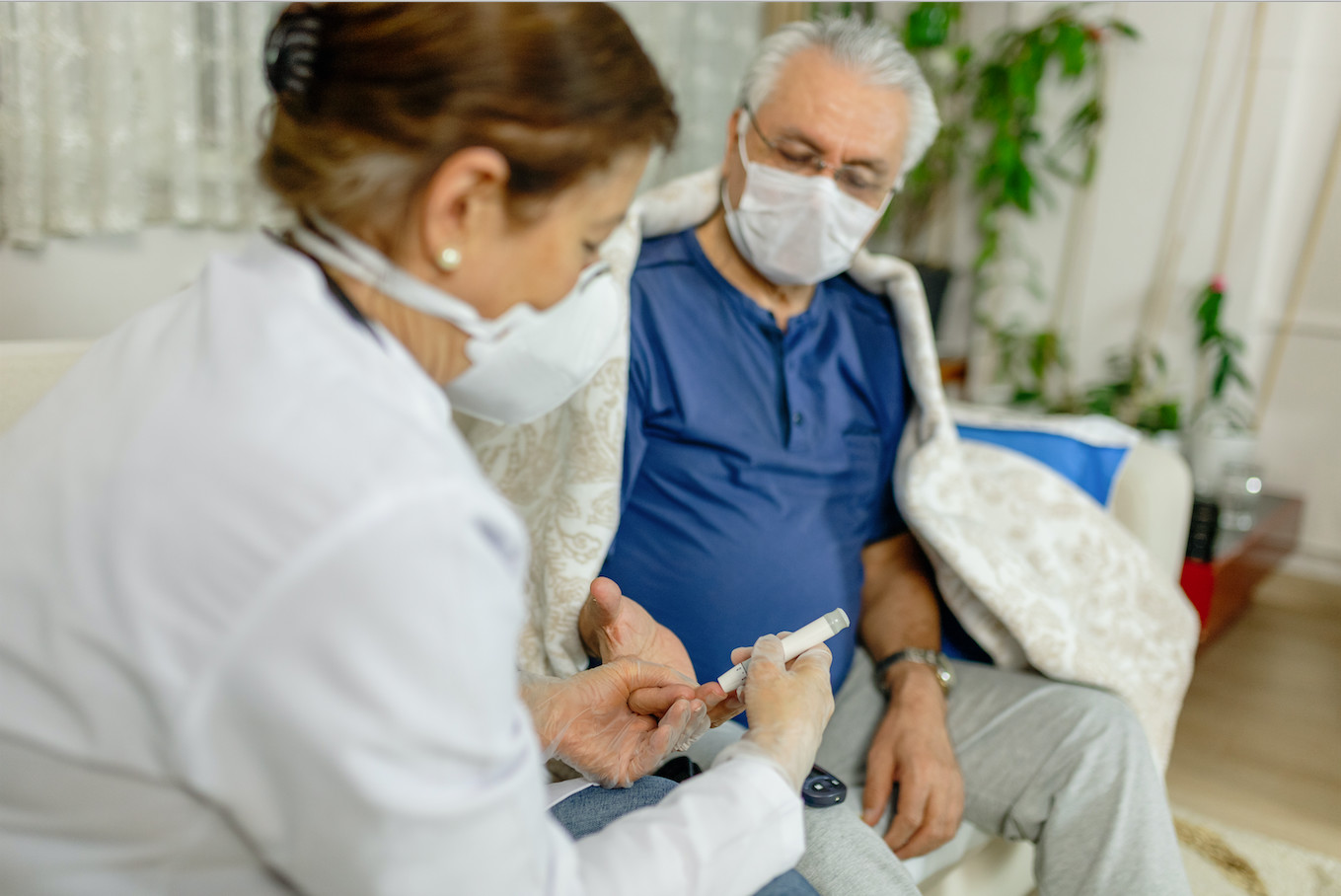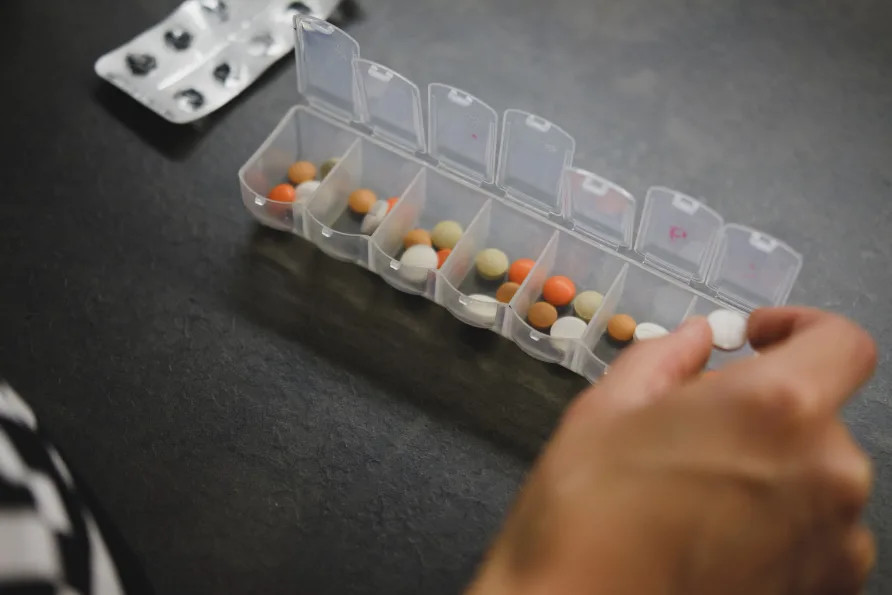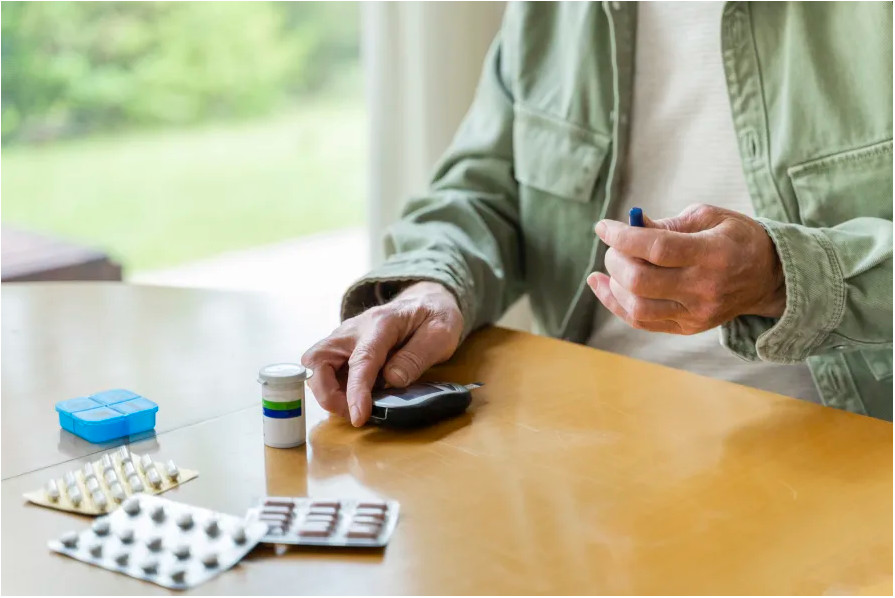
Health & Medicine
Q&A: A new way to treat type 2 diabetes?

There is increasing concern for people living with diabetes whether it be ensuring continued access to medications, glucose management or the implications of infection with COVID-19 itself
Published 28 September 2020
Most people who have lived with diabetes for some time have likely experienced struggles with sticking to strict treatment regimens or changes to their diet, as well as managing social and occupational life.
During the COVID-19 pandemic, there is added concern for people living with diabetes in relation to ensuring continued access to medications, glucose management or the implications of infection with COVID-19 itself.

The evidence around COVID-19 and diabetes shows that people with diabetes are not more likely to catch the infection, but once infected, are twice as likely than others to develop serious infection and are more likely to be admitted to an Intensive Care Unit (ICU).

Health & Medicine
Q&A: A new way to treat type 2 diabetes?
Australian data has shown that diabetes was prevalent in 45 per cent of patients who died in hospital having tested positive for COVID-19. While data from China indicates 10 per cent of people with diabetes and COVID-19 infection died, compared with 2.5 per cent of people without diabetes.
Although distressing, this knowledge can be a powerful incentive to keep attending regular checks and appointments while following the public health advice on COVID-19.
But for many people with ‘hidden’ or unrecognised diabetes, it can take a visit to an emergency department for a seemingly unrelated condition to discover their status. That’s if clinicians think to screen for it – not something that is routine in most hospitals.
Being able to manage diabetes early on in a hospital admission can have a crucial impact on patient outcomes.
We have seen this at the Austin Hospital, where our previous research has led to inpatients over the age of 54 having a test to diagnose the presence of diabetes as part of the Diabetes Discovery Initiative.

Using a glycated haemoglobin test (HBA1c) to assess an individual’s average level of blood sugar over the past two to three months, we are able to identify people with unrecognised diabetes and those with known diabetes and suboptimal glucose management.

Health & Medicine
Sea snail venom holds clues for diabetes treatment
This has meant that people found to have diabetes have been monitored and treated more efficiently – which may lead to shorter hospital stays and faster recovery.
Overseas, there have been reports of increased presentations of diabetic ketoacidosis (DKA) – a serious complication of diabetes – in people with COVID-19 and known diabetes. DKA can often be hard to identify because the symptoms are common to many emergency presentations, so awareness is crucial for control.
But the reason for the increased risk of severe COVID-19 infection in people with diabetes is yet to be determined. Pre-pandemic, we knew there were associations between high blood glucose levels and immune system dysfunction.
Additionally, renal, vascular and cardiovascular complications that come with diabetes and increasing age may make people with diabetes more susceptible to infections generally.

Beyond the headline of higher risk, people with diabetes are keen to know more about how this plays out with their subtype and circumstances.
While this information is still scant, evidence is rapidly evolving.

Health & Medicine
Personalising blood sugar targets
The virus primarily attacks the lungs, but can also invade multiple systems in the body, including the heart, kidney and intestine.
The spike proteins on the coronavirus surface bind with ACE2 cell surface receptors to invade host cells, which subsequently lead to ACE2 downregulation.
People with diabetes and hypertension already have increased levels of ACE2 circulating in their bloodstream. However, there is currently no evidence that this increases susceptibility to infection.
Once serious infection sets in, liver dysfunction, blood clotting disorder and overactivation of lymphocytes and pro-inflammatory cytokines is seen.
Multiple studies have shown a relationship between high blood glucose levels and adverse outcomes from COVID-19.
An observational study from China found raised plasma glucose levels (more than 10mmol/L) were associated with increased COVID-19 complications, whilst a large English cohort study found an association between raised glycated hemoglobin (Hba1c) and death from COVID-19.
Although there are no clinical trial data showing that tighter glucose management may improve COVID-19 infection outcomes, there may be a place for tighter glucose management during this pandemic.

1. General measures:
• Wash your hands frequently with soap and running water and dry properly.
• Avoid touching mouth, nose and eyes.
• Stay home as much as possible. Avoid crowds, non-essential travel and public areas.

Health & Medicine
How to take care of yourself if you have COVID-19
• Avoid touching surfaces in public (including elevator buttons, door handles or handrails). Try to cover your hand or finger with a tissue or your sleeve and wash your hands after.
• Smoking and alcohol cessation – speak to your doctor if you would like assistance.
• Remain up-to-date with the Influenza and Pneumovax (pneumococcal disease) vaccinations.
2. Preparation of supplies
• Collect a supply of simple carbohydrates (like soft drinks, jam, honey or lollies) for if you have a hypoglycaemic episode and are too ill to tolerate other food.
• Write down a list of your usual medications and doses.
• You should have a 30-day supply of insulin and other diabetes medications in the unlikely event that you are quarantined.
• Ensure you have supply of insulin pump consumables and continuous glucose monitoring device.
• All individuals with type 1 diabetes should have sufficient supply of ketone testing strips (and glucagon if prescribed by your doctor).

3. Ongoing diabetes management
People with type 1 diabetes:
• Engage with your diabetes team and your pump supplier, and learn how to upload pump data to your diabetes nurse educator, endocrinologist or doctor while in isolation.

Health & Medicine
Is a delayed cancer diagnosis a consequence of COVID-19?
• Continue to monitor your blood glucose level (BGL), speak to your doctor or diabetes nurse educator for assistance with medication adjustments.
• Develop a ‘sick-day management plan’ with your doctor or diabetes nurse educator.
People with type 2 diabetes:
• Continue to monitor your blood glucose level (BGL), speak to your doctor or diabetes nurse educator for assistance with medication adjustments.
• Continue taking your usual oral medications and insulin as prescribed by your doctor.
• Develop a ‘sick-day management plan’ with your doctor or diabetes nurse educator
As with many areas of health, COVID has been a catalyst for technology to replace face-to-face consultations. Australia has seen significant uptake of telehealth and remote monitoring.

It’s important for people with diabetes to stick to their appointments and initiate discussions with general practitioners or diabetes nurse educators about a sick-day management plan and ongoing care.
This is essentially about what medications to pause or continue in case of acute sudden illness. Increased blood glucose testing is also advised to factor in changes to daily routines, diet and mental health.
We don’t yet have a clear picture of the long-term effects of COVID-19 on people with diabetes. It’s also unknown if organ dysfunction will persist beyond the acute phase, and if this will impact blood sugar control.
This means that comprehensive discharge planning, ongoing education and adapting management strategies is vital to ensure the best long-term management of blood glucose levels.
Banner: Getty Images